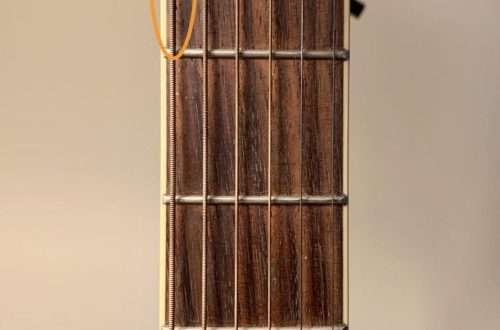
Black and white… bored?
Piano, piano, organ, keyboard, synthesizer – we hear so many names for keyboards. Although they are rarely used consciously, all the instruments hidden under them have a common denominator – a black and white keyboard built according to one pattern. But let’s go back to the beginning, which is the beginning of the adventure with these popular instruments, no matter what you call them.
To start this adventure, we buy a dream instrument and depending on our temperament or the purpose of the purchase, we can either start to play with its functions – fascinate with the number of colors, rhythms, buttons, knobs, or … start with getting to know the heart of all keyboard instruments – the keyboard. It is the matter on which we will be moving while playing the instrument. So let’s try to take a closer look at its structure.
Knowing the arrangement of the keys will allow us to move more freely across the entire width of the instrument, because finding and naming all the sounds will soon not be the slightest problem.
Let’s start with the first sound that practically always starts learning, that is the sound called “c”. I could put a photo of the keyboard in this place with the sound “c” marked and a big arrow shouting at you “HERE HERE!” ;), but I would like to stimulate you to a short independent search, so I will try to explain to you where it is located. By the way, you’ll start learning about the keyboard yourself.
The white keys are arranged in one string and the black keys are arranged in groups of 2 and 3. These black groups are repeated in the same layout throughout the keyboard. Our wanted sound, ie “c”, can be located as the first white key, preceding the group of two black keys.
Now that we’ve found our first sound, let’s try to remember its location. This will allow us to find ourselves on the keyboard more efficiently when we learn the other sounds.
Finish standing.
You’ve probably all heard the word “gama”. You probably immediately associate it with the first music lessons in primary school and at the same time with something “for children”, and we do not want to play some children’s exercises, but take the game seriously. However, scales are the staple of playing any melodic instrument, and every professional musician has not only practiced them in the past, but continues to practice scales!
The scales are built around certain rules and, as long as we follow them scrupulously, none of the scales will be a problem for us (assuming we practice regularly!). The scale consists of 8 sounds (the eighth is the higher equivalent of the first), with distance relations between them. We need to know these distances to create a scale. We will be interested in 2 dates: semitone i a whole ton.
Semitone, is the shortest distance between notes on the keyboard, i.e. CC #, EF, G # -A. The shortest distance just means there’s nothing more to play between them. A whole tone is the sum of two semitones, here are examples: CD, EF #, BC.
To begin with, we will build a C major scale, on the basis of which you will learn how to play scales from any other note by yourself.
I II III IV V VI VII VIII
C D E F G A H C
Task: print (or redraw) this diagram and on the keyboard try to determine the distances between all the notes in turn: CD, DE, EF, FG, GA, AH, HC.
Note – “SPOILER” – if someone has not completed the task yet, do not go to the rest of the article :), in which I provide the solution.
If you’ve done the task correctly, you’ve found it 5 whole tones i 2 halftones. Halftones are between the EF and HC sounds, all other distances are whole tones. Surprising? It turned out that in order to play the C major scale it was enough to play a sequence of 8 white keys starting with the note “c”. However, as soon as we want to build the D major scale, the sequence of white keys will no longer give us a major scale. You will ask “why?” The answer is simple – the distances between the sounds have changed. In order for the scale to be major, we must keep the pattern “whole tone-whole tone-semitone-whole tone-whole tone-whole tone-semitone”
In the case of D major, we get such a pattern.
I II III IV V VI VII VIII
D E F# G A H C# D
Play yourself the C major scale first and then the D major scale. What impressions? Sounds very similar right? It is because of keeping the same pattern! If we apply the skeleton of whole tones and semitones (between 3-4 and 7-8 scale degrees) to any note on the keyboard, we will be able to build a major scale wherever we want. Check!





